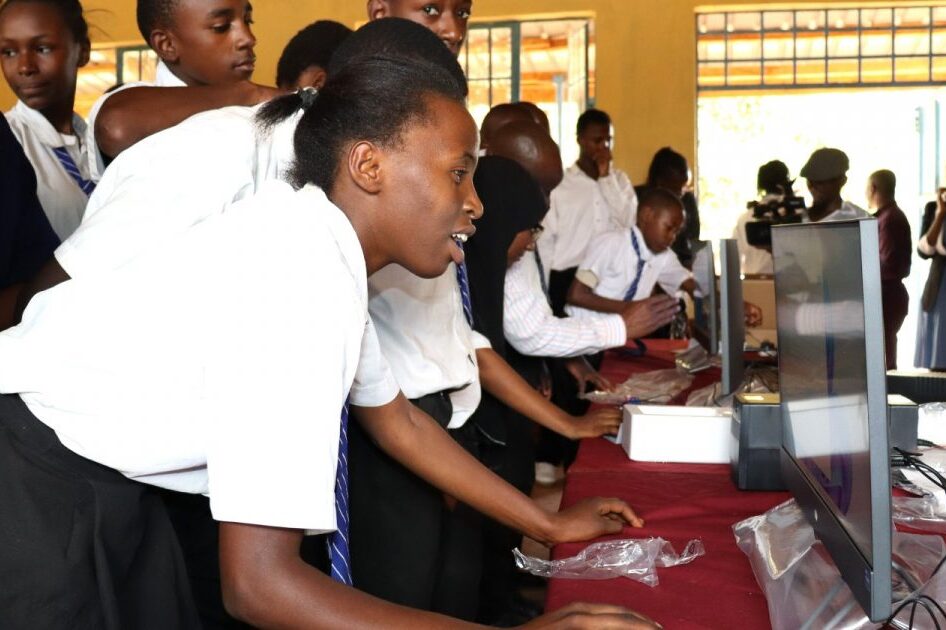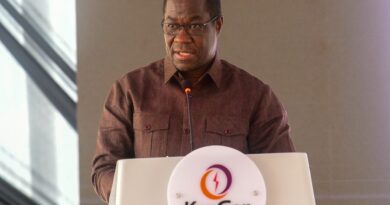How universal electricity access in schools is boosting digital learning

More than 94% of public schools in Kenya are now connected to electricity, a fete that is accelerating digital learning. This includes electricity supplied by the national grid through Kenya Power or own-source generation from solar, generators and other sources.
A survey conducted by the Elimu Yetu Coalition to understand school digital ecosystems in ten counties across Kenya has revealed that 94.7% of public primary schools are connected with power.
The survey dubbed ‘Understanding school Digital Ecosystem in 10 counties in Kenya’ is a GIZ Generation Digital Project aimed at establishing whether there is sufficient ICT connectivity in schools within the targeted counties.
Data on the ICT ecosystem was collected from 1,000 public primary schools in select counties, including Nyandarua, Makueni, Kitui, Mandera and Busia. Others are Trans Nzoia, Kericho, Kisii, Nyamira, and Taita Taveta.
In a forum to report the findings of the survey in Murang’a town, Elimu Yetu Coalition National Coordinator Joseph Wasikhongo said 947 out of 1,000 public primary schools selected for the study were connected to power (94.7%).
Using a framework of power connectivity to the national grid or using alternative sources of power such as solar and generators, 887 schools (88.7%) and 61 schools (6.1%) were connected to power, respectively.
Elimu Yetu Coalition National Coordinator Joseph Wasikhongo
Despite the high rate of connectivity to power by public schools, the cost of electricity remains prohibitive. Further, the power connection is unreliable, especially in rural areas where a significant geographical area is usually served by a single transformer.
“When we start asking these questions, you find that the statistics start going down,” he said, adding that power stability is at 73.6% and power affordability is at 78.5%.
Digitization of learning in Kenya gathered steam in 2013 when President Uhuru Kenyatta and his then deputy William Ruto took office, promising to distribute millions of laptops to all learners in primary schools.
The schools digitization program helped accelerate power connectivity in schools particularly those in rural areas. This benefited not only the schools but also nearby residents who were now able to take advantage of the close proximity of the power connection to also connect their homes or business premises.
The uptake of digital learning has gone a notch higher since the outbreak of the Covid-19 pandemic in the country in March 2020, which forced schools to close for more than eight months.
However, many public schools in the country are still not connected to the internet, delaying their transition to digital learning.
Wasikhongo said once the gaps in terms of ICT are understood, addressing those gaps, which can vary from the context of infrastructure-tackle issues such as internet connectivity, devices, device security and storage, and teacher training, can be addressed.
In terms of Internet connectivity, the coordinator said according to the survey, 353 schools out of 1000 (35.3%) were connected to the Internet.
“502 (50. 2%) of the schools were using other coping mechanism to access Internet while 12.5% of the schools had never been connected to any kind of internet,” said Wasikhongo.
The survey report recommended that the internet should be connected to all public primary schools, and stability improved through the installation of boosters, the provision of Wi-fi, and routers.
Further, the report recommended more efforts should be made to train teachers on ICT and digital skills to achieve a 100% level of transition in enabling them to integrate ICT in education.
Kenya has one of the highest electricity access rates in Africa, but challenges such as affordability and reliability of supply remain a headache that continues to frustrate millions of customers. The country plans to achieve universal electricity access by 2030.
news@theenergyreview.com
Discover more from THE ENERGY REVIEW
Subscribe to get the latest posts sent to your email.


